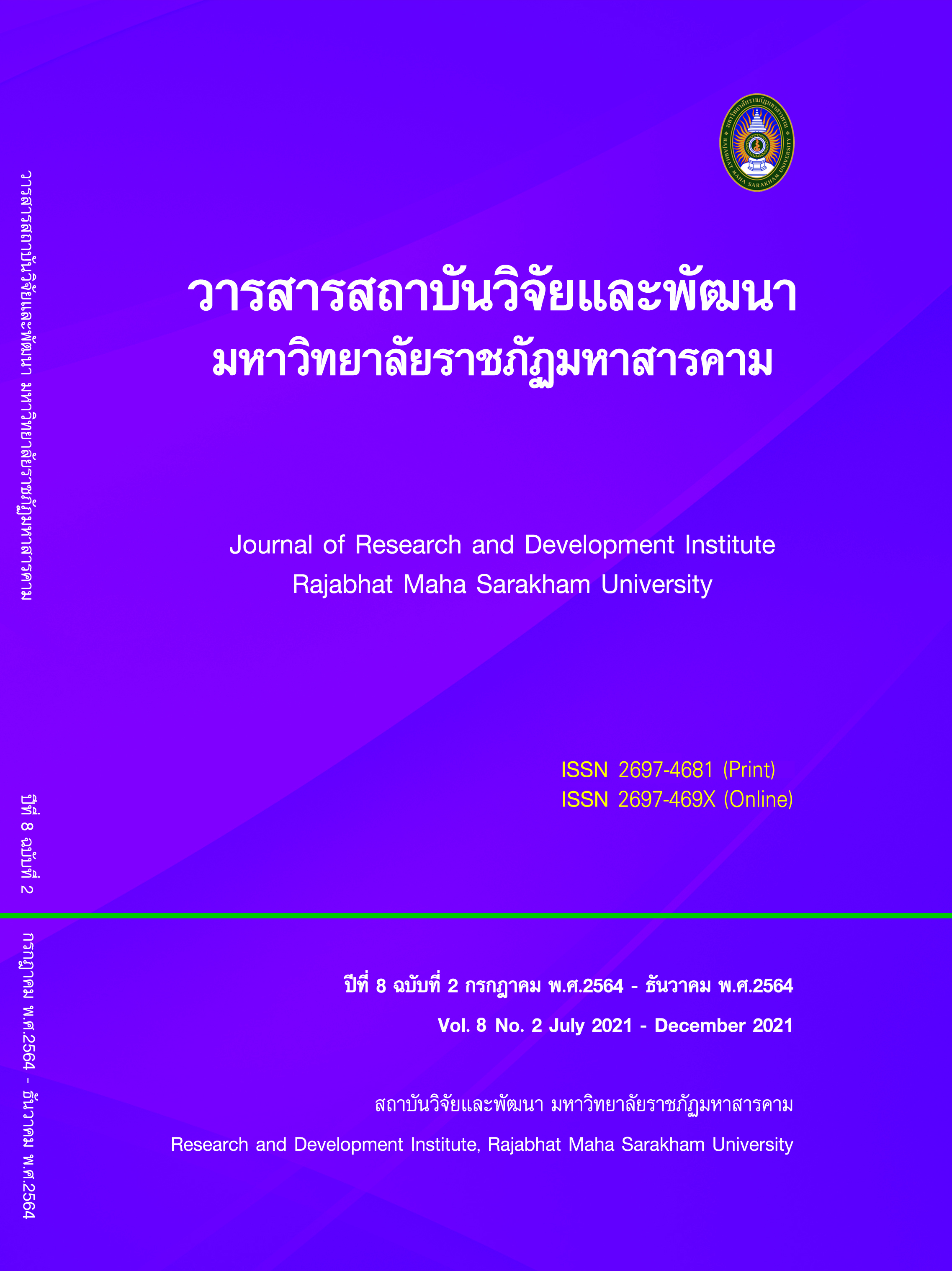Folk Media as a Social Capital Enhancing the Creative Area for Children and Youths
Keywords:
Folk Media, Social Capital, Enhancing the Creative Area, Children and YouthsAbstract
The objectives of the research were: 1) to compile oral folk media as a social capital of Ban Gud Kaen, Nongno Sub-district, Muang District, Mahasarakham Province; 2) to study the methods of transmitting the oral folk media of the people of Ban Gud Kaen, Nongno Sub-district, Muang District, Mahasarakham Province; and 3) to study the social capital value of the oral folk media on enhancing the creative area for children and youths. The research employed the qualitative research methodology. The research setting is Ban Gud Kaen Village No. 2 and Village No. 6, Nongno Sub-district, Muang District, Mahasarakham Province. The informants were community leaders, ceremonial leaders, village learned persons, parents, children and youths, 30 people altogether. The tools consisted of 1) an interview form, 2) a question guideline for focus group discussion and a record of the focus group discussion, 3) a questionnaire, and 4) a participatory and non-participatory observation form.
The results are as follows:
- The study and compilation of the folk media revealed that 13 types of oral folk media as social capital were known, but only 8 types have been handed down to the present time.
- The transmission of the oral folk media of the people of Ban Gud Kaen employed 6 types of social capital. The receivers were both males and females.
- Regarding the social capital value of the oral folk media, it was found that: 1) the folk media served as wisdom treasures; 2) the folk media gave entertainment; 3) the folk media promoted thinking and imagination; and 4) the people of Ban Gud Kaen were proud of their locality.
References
Attagara, K. (1976). Folkloristics. Bangkok: Educational Supervision.
Baibong, S. (2020). The interviewee. Maha Sarakham: Ban Kut Khaen, Nong No Subdistrict.
Chantavanich, S. (2006). Qualitative Research Methods. Bangkok: Darn Sutha Press Company Limited.
Chitchinakul, K. (2002). Folkloristics. Bangkok: Odeon Store.
Kaew-art, P. (2020). The interviewee. Maha Sarakham: Ban Kut Khaen, Nong No Subdistrict.
Kaewthep, K., et al. (2012). Old media - new media: signs, identity, ideology. Bangkok: Parbpim.
Mallikamas, K. (1975). folklore. Bangkok: Ramkhamhaeng University.
Muean-Mat, R. (2020). The interviewee. Maha Sarakham: Ban Kut Khaen, Nong No Subdistrict.
Nakornthap, A., et al. (2005). Media literacy: concepts and approaches for enhancing well-being and learning about valuable exposure. Bangkok: amchitti Institute.
Nathalang, S. (2005). Folklore Theory: Scientific Methods for the Analysis of Myths and Folktales. Bangkok: Chulalongkorn University.
Nathalang, S. (2009). Folklore Theory: Scientific Methods in the Analysis of Myths - Folktales. (2nded). Bangkok: Chulalongkorn University.
Nilklad, T. (2006). Achievement in physics of students in the 4th grade by organizing learning activities that enhance the wisdom of the hill tribe people. Master of Thesis: Chiang Mai University.
Phuttakee, J. (2020). The interviewee. Maha Sarakham: Ban Kut Khaen, Nong No Subdistrict.
Rittidet, P., et al. (2012). Community learning center organized a participatory vocational education by community organization for self-reliance of Ban Kut Khaen farmers group.Nong No Subdistrict, Mueang District, Maha Sarakham Province.
Bangkok: Office of the National Research Council of Thailand.
Setpakdee, T. (2020). The interviewee. Maha Sarakham: Ban Kut Khaen, Nong No Subdistrict.
Thammawat, J. (1988) Thai village direction. Bangkok: Village.
Thaweesuk, B. (1987). Folklore. Bangkok: Ramkhamhaeng University.
Thitathan-nathalang, S. (2009). Folklore Theory: Methodology in the Analysis of Folklore Mythology. Bangkok: Mahachulalongkornrajavidyalaya University .
Udomwet, S. (1981). Folkloristics. Phetchaburi: Phetchaburi Teachers College.
Virulrak, S. (1984). Local media for development. Journal of Communication Arts. 5 : 5 (August 1984): 17-21.
Downloads
Published
How to Cite
Issue
Section
License
Copyright (c) 2021 Journal of Research and Development Institute Rajabhat Maha Sarakham University

This work is licensed under a Creative Commons Attribution-NonCommercial-NoDerivatives 4.0 International License.
Articles that are published are copyrighted by the authors of the articles







